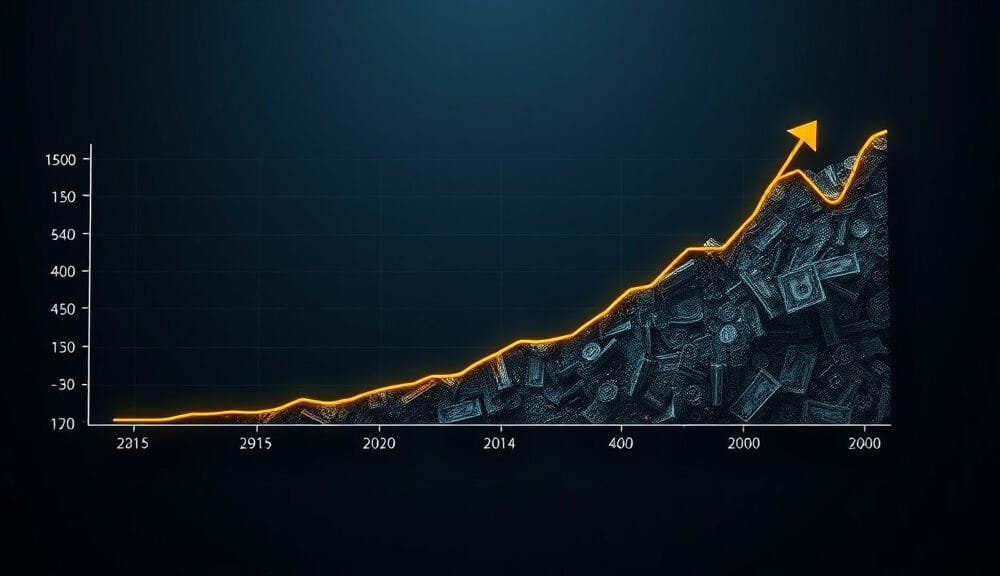Understanding Compound Interest: The Key to Growing Wealth
When it comes to growing wealth, few concepts are as powerful and influential as compound interest. Often referred to as the “eighth wonder of the world,” compound interest has the potential to turn even modest savings into substantial wealth over time. Whether you are investing in stocks, saving for retirement, or building an emergency fund, understanding how compound interest works is crucial to maximizing your financial potential. In this comprehensive guide, we will delve into what compound interest is, how it works, why it is so powerful, and how you can use it to grow your wealth effectively.
What is Compound Interest?
Compound interest is the interest earned on both the initial principal amount and the accumulated interest from previous periods. In other words, it is interest on interest. This phenomenon allows your money to grow exponentially over time as interest keeps getting added to the principal, resulting in larger amounts of interest being generated in subsequent periods.
Simple Interest vs. Compound Interest
- Simple Interest: Simple interest is calculated only on the original principal amount, and it remains fixed over time. For example, if you invest $1,000 at an annual simple interest rate of 5%, you will earn $50 in interest each year.
- Compound Interest: Compound interest, on the other hand, is calculated on both the initial principal and any accumulated interest. With compound interest, the interest earned in each period is added to the principal, leading to a higher amount of interest being earned in the future.
Related Image Prompt: A side-by-side comparison chart showing the growth of an investment with simple interest versus compound interest over time.
How Does Compound Interest Work?
The formula for calculating compound interest is as follows:
A = P (1 + r/n)^(nt)
Where:
- A = The future value of the investment/loan, including interest
- P = The principal investment amount (initial deposit or loan amount)
- r = The annual interest rate (in decimal form)
- n = The number of times interest is compounded per year
- t = The number of years the money is invested or borrowed for
Example of Compound Interest
Let’s say you invest $1,000 at an annual interest rate of 5%, compounded annually, for 10 years. Using the formula:
A = 1,000 (1 + 0.05/1)^(1*10) = 1,000 (1.05)^10 ≈ 1,628.89
After 10 years, your investment will grow to approximately $1,628.89. The additional $628.89 represents the compound interest earned on your initial investment.
Related Image Prompt: A graph showing the exponential growth of an investment over time with compound interest, highlighting how the growth accelerates as interest is compounded.
The Power of Compounding Over Time
The true power of compound interest lies in its ability to grow wealth exponentially over time. The longer you leave your money invested, the more it will grow due to compounding. This makes time one of the most important factors in maximizing the benefits of compound interest.
The Rule of 72
The Rule of 72 is a simple way to estimate how long it will take for an investment to double in value at a given interest rate. To use the Rule of 72, divide 72 by the annual interest rate.
Example: If your investment earns an annual interest rate of 6%, it will take approximately 72 / 6 = 12 years for your investment to double.
The Impact of Starting Early
Starting to invest early can have a dramatic impact on your overall wealth due to the power of compound interest. The earlier you start, the more time your money has to grow.
- Example: Imagine two individuals, Alice and Bob. Alice starts investing $5,000 per year at age 25, while Bob starts investing the same amount at age 35. By the time they both reach 65, Alice will have significantly more wealth than Bob, even though they both invested the same annual amount. The extra 10 years of compounding gives Alice a substantial advantage.
Factors That Influence Compound Interest
Several factors can influence the amount of compound interest you earn over time. Understanding these factors can help you make informed decisions to maximize your wealth.
1. Interest Rate
The interest rate plays a crucial role in determining how quickly your money will grow. A higher interest rate will result in faster growth due to compounding.
- Example: An investment with a 10% annual interest rate will grow much faster than one with a 5% rate, assuming the same principal and time period.
2. Compounding Frequency
The frequency with which interest is compounded can also impact the overall growth of your investment. Interest can be compounded annually, semi-annually, quarterly, monthly, or even daily. The more frequently interest is compounded, the more interest you will earn.
- Example: If you invest $1,000 at an annual interest rate of 5%, compounded annually, you will have less after 10 years than if the interest were compounded monthly.
3. Time
Time is one of the most powerful factors when it comes to compound interest. The longer you leave your money invested, the more it will grow.
- Example: Investing $1,000 for 20 years will yield significantly more than investing the same amount for 10 years, due to the additional compounding periods.
How to Use Compound Interest to Grow Wealth
Leveraging compound interest effectively can help you grow your wealth and achieve your financial goals. Here are some strategies to make the most of compound interest:
1. Start Early
The earlier you start investing, the more time your money has to compound. Even small contributions made consistently over time can lead to significant wealth.
- Example: Investing $200 per month from age 25 to 65 will result in much more wealth than starting at age 35, thanks to the power of compounding over an additional 10 years.
2. Make Regular Contributions
Consistent contributions to your investment or savings account can significantly boost the power of compounding. Set up automatic contributions to ensure that you are consistently adding to your investments.
- Dollar-Cost Averaging: By investing a fixed amount regularly, you can take advantage of dollar-cost averaging, which helps mitigate the impact of market volatility and allows your investments to grow steadily.
3. Reinvest Dividends
If you invest in stocks or mutual funds, reinvesting dividends can accelerate the compounding process. Instead of taking dividends as cash, reinvest them to purchase more shares, allowing you to earn more interest over time.
- Example: Reinvesting dividends from a stock portfolio can lead to exponential growth compared to taking dividends as cash payments.
4. Choose Investments with High Interest Rates
Investing in assets that offer a higher rate of return can enhance the power of compounding. Consider diversifying your portfolio to include stocks, bonds, real estate, or other assets that offer competitive returns.
- Risk vs. Reward: Higher returns often come with higher risk, so it is important to assess your risk tolerance and make informed decisions.
5. Be Patient and Avoid Withdrawals
Compound interest works best when left undisturbed. Withdrawing from your investments can disrupt the compounding process and reduce your overall returns. Be patient, and allow your investments to grow over time.
Common Myths About Compound Interest
1. “You Need a Lot of Money to Benefit from Compound Interest”
This is a common misconception. Even small contributions can grow substantially over time, thanks to compounding. The key is to start early and be consistent.
- Example: Investing just $50 per month from age 20 to 65 can lead to significant wealth due to the power of compound interest.
2. “Compound Interest Only Works for Long-Term Investments”
While compound interest is most powerful over the long term, it can also work effectively for medium-term goals, such as saving for a down payment on a house or building an emergency fund.
- Example: Investing for 5-10 years with compound interest can still yield meaningful returns, depending on the interest rate and compounding frequency.
Real-Life Examples of Compound Interest
1. Retirement Savings
Compound interest is a key factor in retirement savings. Contributing to a retirement account, such as a 401(k) or IRA, allows your investments to grow tax-deferred, which means you benefit even more from compounding.
- Example: If you contribute $5,000 annually to a retirement account with an average annual return of 7%, compounded annually, for 30 years, you will have approximately $511,000 by the end of the period.
2. High-Interest Savings Accounts
High-interest savings accounts leverage compound interest to help your money grow while keeping it accessible. Even though the interest rates are lower than those of investment accounts, compounding still plays a role in helping your savings grow.
- Example: If you deposit $10,000 in a high-interest savings account at an annual interest rate of 2%, compounded monthly, after 10 years, you will have approximately $12,188.
3. Investment in Stocks and Bonds
Investing in the stock market or bonds can also take advantage of compound interest. The returns generated from these investments can be reinvested to purchase additional shares or bonds, leading to exponential growth over time.
- Example: If you invest $10,000 in a diversified stock portfolio with an average annual return of 8%, compounded annually, after 20 years, your investment will grow to approximately $46,610.
Conclusion
Compound interest is a powerful tool that can help you grow your wealth over time. By understanding how compound interest works, starting early, making regular contributions, reinvesting dividends, and being patient, you can harness the power of compounding to achieve your financial goals. Whether you are saving for retirement, building an emergency fund, or investing in the stock market, compound interest can help you make the most of your money. Remember, the key to maximizing compound interest is to start as soon as possible and let time do the work for you.




No Comment! Be the first one.